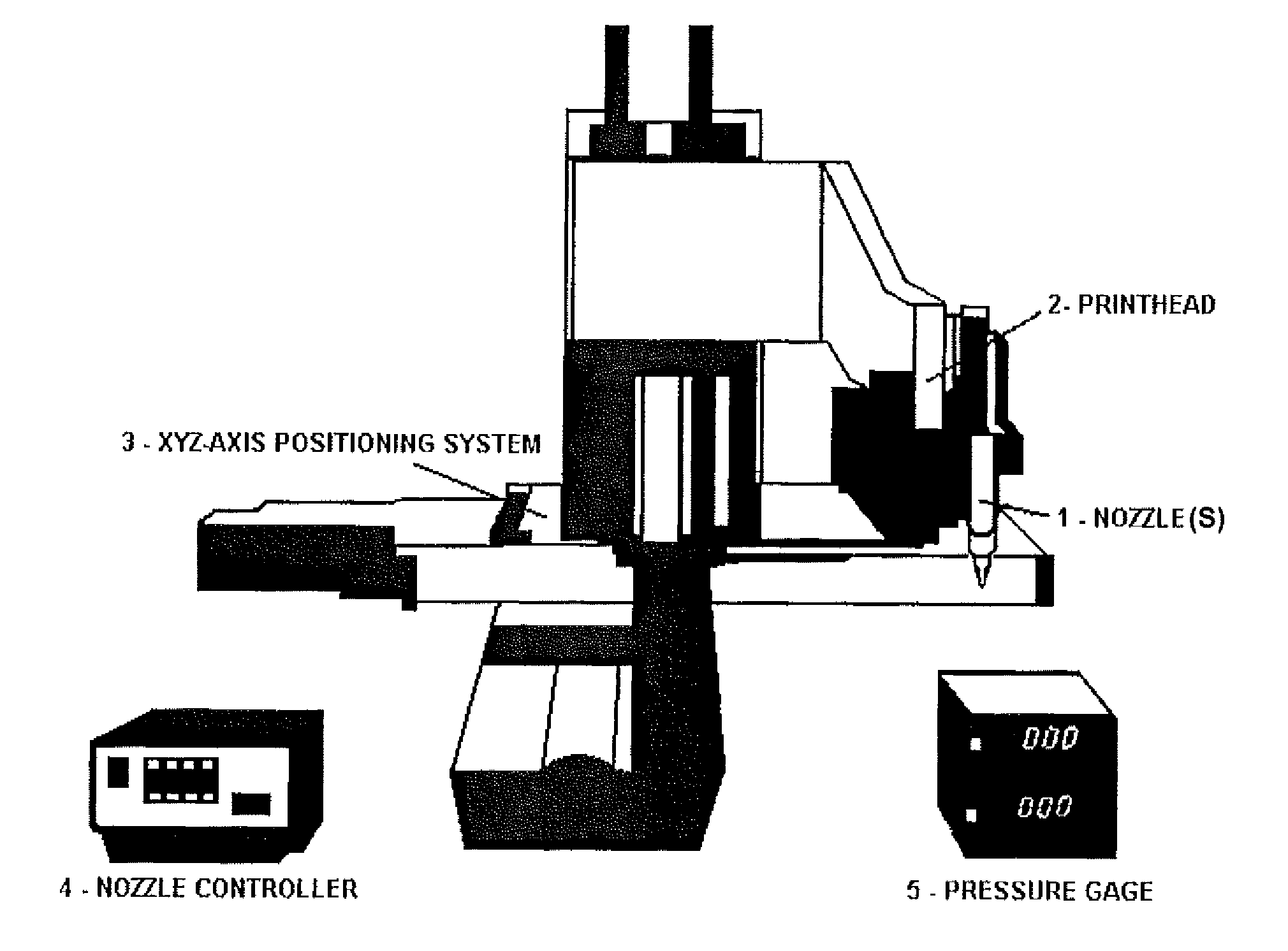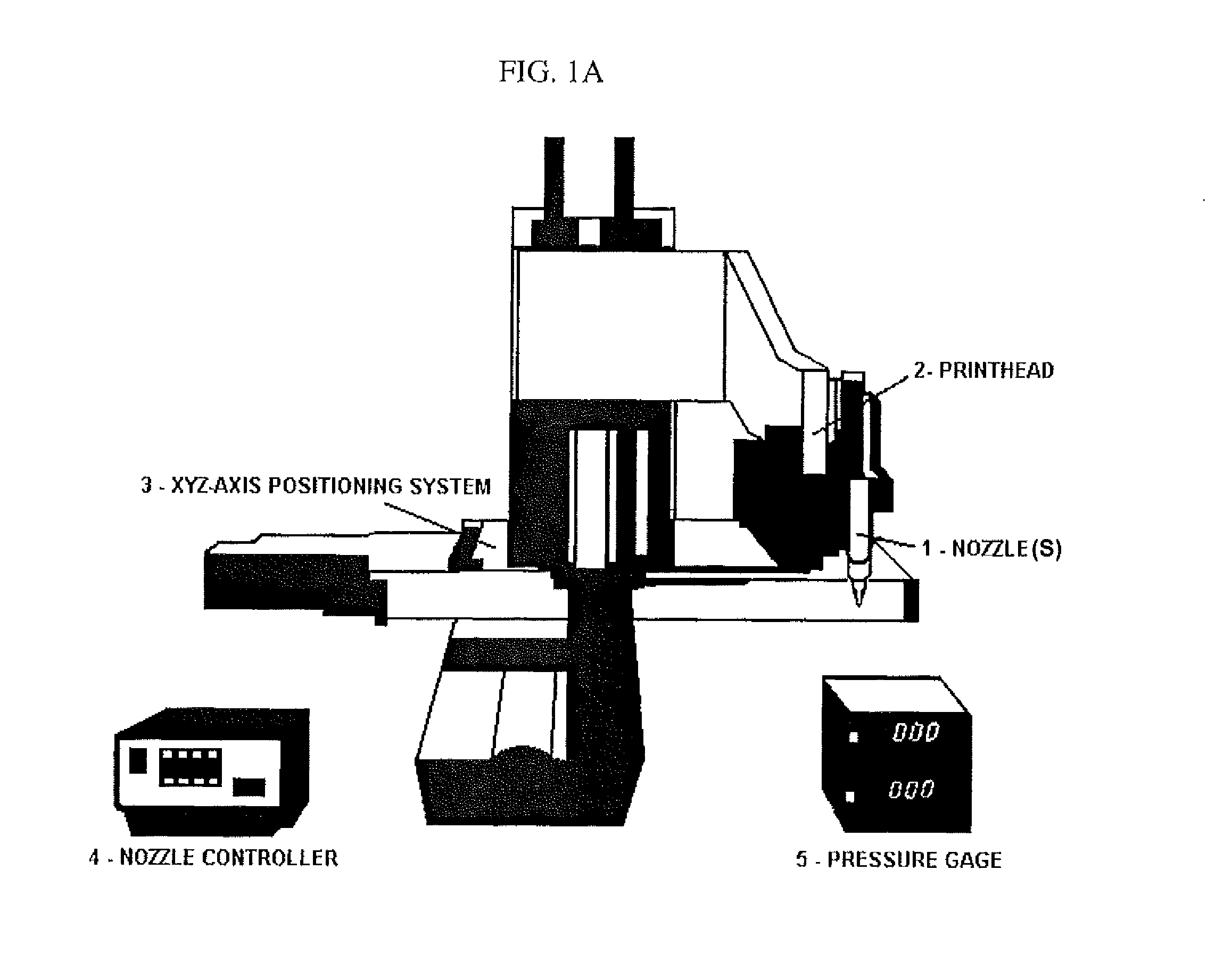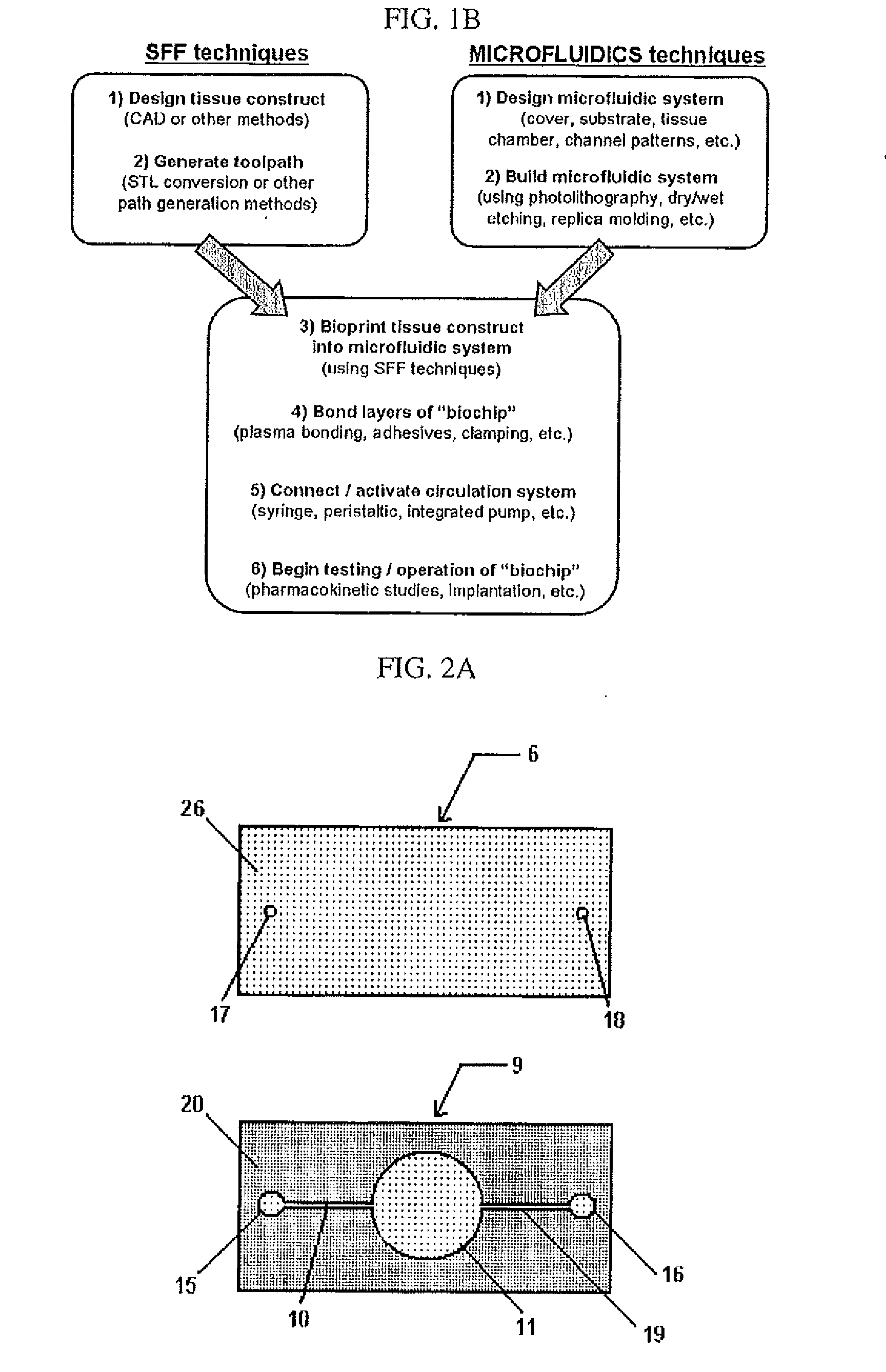Compositions and Methods for Functionalized Patterning of Tissue Engineering Substrates Including Bioprinting Cell-Laden Constructs for Multicompartment Tissue Chambers
a tissue engineering and cell-laden technology, applied in the field of compositions and methods for tissue engineering substrates including bioprinting cell-laden constructs for multi-compartment tissue chambers, can solve the problems of low mechanical properties of scaffolds, lack of interconnection, and often far from the requirements of tissue engineering scaffolds
- Summary
- Abstract
- Description
- Claims
- Application Information
AI Technical Summary
Problems solved by technology
Method used
Image
Examples
experimental examples
[0190]The invention is now described with reference to the following Examples. These Examples are provided for the purpose of illustration only and the invention should in no way be construed as being limited to these Examples, but rather should be construed to encompass any and all variations which become evident as a result of the teaching provided herein.
[0191]Without further description, it is believed that one of ordinary skill in the art can, using the preceding description and the following illustrative examples, make and utilize the compounds of the present invention and practice the claimed methods. The following working examples therefore, specifically point out the preferred embodiments of the present invention, and are not to be construed as limiting in any way the remainder of the disclosure.
example 1
[0192]Human hepatocytes (HepG2) and human melanoma cells (M10) were cultured in α-Minimum Essential Medium (Gibco) at 37° C. in 5% CO2. Cells were mixed with BME (i.e., Basement Membrane Matrix Phenol Red-free (BD Biosciences Matrigel)) chilled to 4° C. and printed onto a glass microfluidic chip having a PDMS substrate (see FIGS. 13 and 14) using a temperature-controlled BME printing apparatus 0-5° C. (see, for example, FIGS. 9 and 10).
[0193]After 24 hours, cells were treated with an inactive form of the anti-radiation drug amifostine (see Grochova, 2007, J Appl Biomed 5:17) by perfusion of a 1 mM solution of the inactive form of amifostine in media for 4 hours. The inactive form of amifostine (i.e., WR-2721; H2N-(CH2)3-NH—(CH2)2-S—PO3H2) is converted to the active form (i.e., WR-1065; H2N—(CH2)3—NH—(CH2)2—SH) when it is dephosphorylated by cells. After the 4 hour treatment with amifostine, the cells were exposed to 2 Grays of γ-radiation from a cesium source. Immediately after expo...
example 2
Plasma Treatment of Polycaprolactone Scaffolds
[0195]This example describes a solid free-form fabrication (SFF) technology based Precision Extrusion Deposition (PED) process for manufacturing manufacture three-dimensional (3D) polycaprolactone scaffolds and their surface treatment with plasma source for enhanced osteoblast cell adhesion and proliferation. The PED process allows the manufacture of tissue engineering scaffolds based on designed geometry with complete interconnectivity, controllable porosity. The as-fabricated polycaprolactone scaffolds have a 0 / 90° strut configuration of 300 μm pore size and 250 μm strut width. In order to improve cellular activity on 3D polycaprolactone scaffolds, they were surface treated with oxygen-based plasma source. The surface hydrophilicity and total surface energy of polycaprolactone was increased with plasma treatment. Comparison was made between different plasma treatment times, including 30 seconds, 1, 2, 3, 5 and 7 minutes to identify the...
PUM
| Property | Measurement | Unit |
|---|---|---|
| melting temperature | aaaaa | aaaaa |
| shear stress | aaaaa | aaaaa |
| diameter | aaaaa | aaaaa |
Abstract
Description
Claims
Application Information
 Login to View More
Login to View More - R&D
- Intellectual Property
- Life Sciences
- Materials
- Tech Scout
- Unparalleled Data Quality
- Higher Quality Content
- 60% Fewer Hallucinations
Browse by: Latest US Patents, China's latest patents, Technical Efficacy Thesaurus, Application Domain, Technology Topic, Popular Technical Reports.
© 2025 PatSnap. All rights reserved.Legal|Privacy policy|Modern Slavery Act Transparency Statement|Sitemap|About US| Contact US: help@patsnap.com



